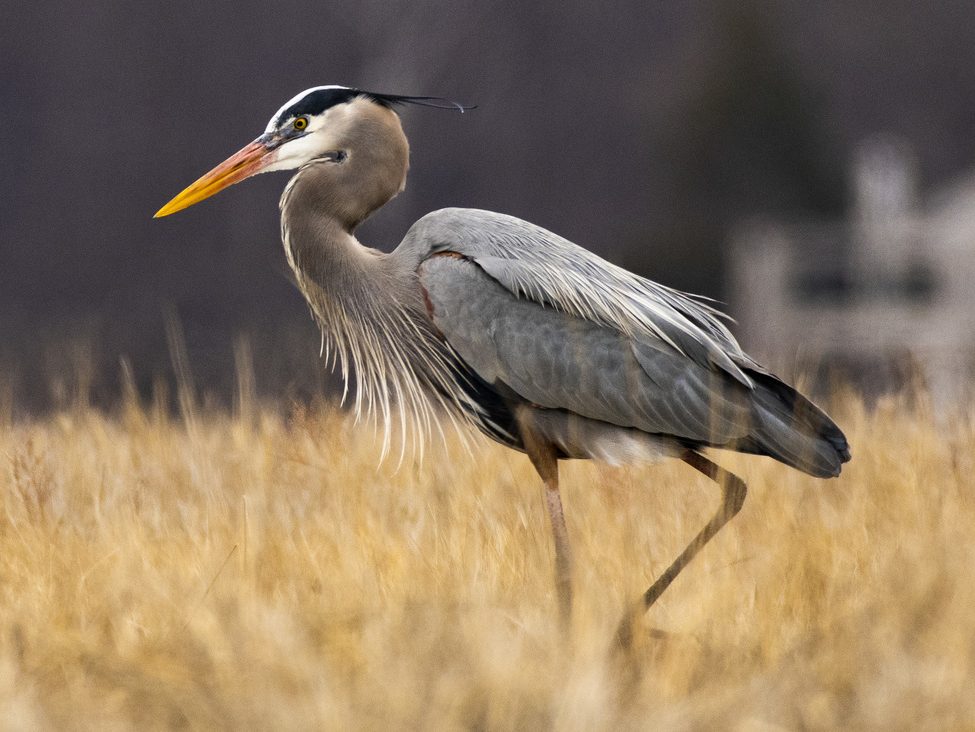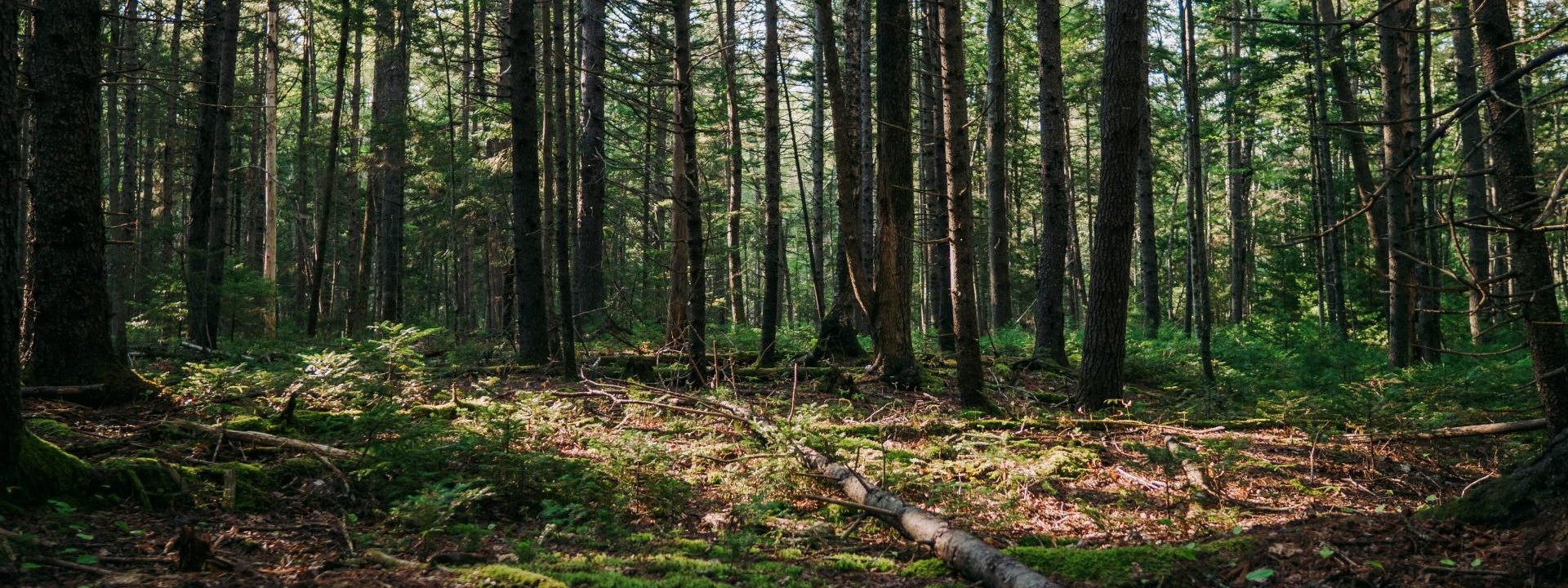
Creature Feature: Great Blue Heron
April 26, 2022
Pedal for the Cause
May 3, 2022
To Tree or Not to Tree
Author: Liz Clift
One of the oft-touted “solutions” to climate change is to plant more trees, which is also called afforestation (planting trees in areas that were not recently forested) or reforestation (planting trees or allowing trees to regrow in areas that were recently forested).
Governments and nonprofits across the United States—and across the world—are developing and deploying plans to plant more trees, generally as part of multi-pronged efforts to attempt to address climate change and planning policies that reduced (or largely eliminated) canopy cover in poorer areas.
Sometimes this is a great idea. Trees can act as carbon sinks, can work to locally reduce temperatures, provide habitat, and add aesthetic appeal to an area. However, in practice this isn’t always as great as it seems on paper. There are a number of factors that should be considered before a canopy cover or tree-planting goal is set, some of which I address below.
The Right Tree
Planting just any old tree doesn’t necessarily provide the same benefits as planting trees that are adapted to the area (or the changing climate). They can be susceptible to disease or pests—or can spread aggressively and outcompete native trees. Trees that aren’t adapted to the local environment may also just struggle to survive because they require additional supplemental irrigation, drown in a high water table, or otherwise fail to thrive for a variety of reasons.
In addition, monocultures or near monocultures of trees (like those frequently seen in reforestation efforts after logging or for other commercial purposes) can result in a misunderstanding of long-term carbon capture due, in part, to the relatively short lifespan of plantation trees—and store less carbon overall than species rich forests. Yet these plantation trees often count as “trees planted” toward overall tree planting goals.
Choosing the “right” tree for the place varies based on goals—which are often competing—but taking into consideration both goals and other factors such as nativity, habitat restoration, water requirements, future use, and longevity can help planners, restoration practitioners, landscape architects, landowners, and others make good choices for the location.
In addition to choosing the “right” trees for an area, considering whether this is an area where reforestation or afforestation should be considered.
Reforestation Considerations
As mentioned above, trees in forests with greater biodiversity offer greater carbon sequestration. These trees are also more likely to survive, especially when mycorrhizal networks are left relatively intact and when “mother trees” are allowed to remain. When reforestation is completed with consideration to ecosystem health, they can also offer more habitat for other plants and animals.
Reforestation efforts may also need to consider the ways that deforestation has impacted the landscape. Deforested lands can experience increased erosion, greater susceptibility to extreme weather while replanted trees are young, and less ability for young trees to access nutrients. Newly reforested lands can also face increased browsing pressure from ungulates, may offer less nutrient availability, and more susceptible to disease or pests.
Reforestation efforts are long-term efforts. It will take a while for the trees to produce a shade canopy—if that is indeed the goal—and longer still for them to reach maturity. This fact can make it tempting to plant fast-growing trees (even when those fast-growing trees aren’t native to the area or don’t offer appropriate habitat) or crop trees, because we’re used to results we can see during our lifetimes. If we are truly going to consider reforestation as one of the solutions, we need to begin the practice of long-term planning. This might include asking questions such as:
• What do we hope this area will look like in 50 years? 100? 300?
• Do we plan to protect this reforested area in the long-term? If so, how? If not, how will we manage the soil?
• How do we plan to utilize this land over time?
• What trees are appropriate choices for the timeline we’re considering and the goals for the land?
• Do we want to restore habitat in this area? If so, to what extent?
• Do we want to restore water courses in ways that would eventually benefit trees? This may include options such as improving sinuosity, re-introduction of beavers, restoring connection to the floodplain, installation of green infrastructure, removal of dams, and many other options, depending on the particulars of a given watercourse.
• Will the project site result in long-term habitat restoration, or will some or all areas be cleared (again) in the future?
• What did this area historically look like, and what did it look like before the last time it was cleared?
• What might be some of the challenges (including political challenges, geography, climate, and funding) to planting more trees? A diversity of trees? Extending the timeline between clearing?
There are many more questions you can ask—and restoration practitioners, such as the employees at Great Ecology, can help you determine what might be best for your site.
What if you’re considering planting trees on an area that was not recently forested?

Afforestation Considerations
Afforestation is what a lot of people mean when they talk about reforestation—meaning they have canopy or tree-planting goals for areas that have not recently been forested.
First, it’s important to consider that trees and forests aren’t the end-all be-all. Native grasslands can also offer significant carbon sequestration benefits—and unlike forests, grasslands can store a significant amount of carbon in the soil. This means, in some cases, restoring grasslands may offer greater carbon sequestration benefits than planting trees.
Grasslands may be the appropriate choice in areas where there is less rainfall, stronger winds, more extreme summers and/or winters, or where historic and remnant grasslands exist. By selecting to maintain—or restore—native grasslands, you can also work to support biodiversity of plant and animal species, particularly those adapted to these types of ecosystems.
However, grasslands are generally underappreciated. There are probably a lot of reasons for this, ranging from the more subdued nature of grasslands compared to forests to the ways our educational system simplifies the carbon and oxygen cycles to a lack of understanding about how much biodiversity these ecosystems can support.
As I casually talked with a few people about this blog, it also became clear that because of the simplified way we talk about biological succession that people largely saw grasslands as being “on the way” to forests and therefore a little less valid (or important!) than forests. While grasslands may eventually turn into forests—and after repeated fires, forests may revert to grasslands—that doesn’t make them less important!
Building an appreciation of grasslands—and improving understanding of the ways native grassland ecosystem can benefit water quality and quantity, biodiversity, agricultural practices, and carbon sequestration can help the public better understand these spaces when they see them—and perhaps even begin to recognize that tall grasses and flowers are not necessarily “weedy;” that instead we’ve been shaped to imagine that grassy areas should be turf grass and that only trees offer cooling or carbon sequestration benefits.
If you’re in a decision-making position about revegetating a landscape, and you think perhaps afforestation might not be the best option for your site, here are some things to consider:
• What does the local rainfall and/or water table support? In drier areas, you may still be able to increase tree cover near bodies of water.
• Does this area have a recorded history of being forested?
• Are there remnant native grasslands in the area and/or historic documentation about the grasslands in the area?
• How could grassland restoration—rather than afforestation—support local species biodiversity?
• How common are drought and/or wildfire in the region, both in present day and historically?
• Does the project location experience extremes in the summer and/or winter?
• Will trees survive without supplemental irrigation? If so, what is the threshold at which they might need supplemental irrigation in the case of ongoing drought?
As with reforestation, these are only some of the things you may want to consider for a site. Great Ecology can help you further determine what strategies might be best for your project site or municipality, based on your goals and potential constraints.
Carbon Sinks Aren't Enough
Ultimately, restoring ecosystems can help us—collectively—make huge strides toward creating a more vibrant future, with more resilient ecosystems and cities. But trying to sequester carbon via ecosystem restoration won’t be enough.
We will also have to change habits, at all levels. This will mean things like:
• Reconsidering how we design our cities and towns to make them less automobile-centric and encourage people-powered transportation (e.g., walking, biking, use of mobility aids) and mass-transit options;
• Redesign of the supply chain to produce more locally (wherever we live in the world), reduce plastic waste and our reliance single-use plastics for product shipping, and begin to curb the appetite for “on-demand” deliveries of goods;
• Increased emphasis on local, regenerative food production methods; and
• An end to planned obsolescence, particularly in the technology sector as well as developing ways to incentivize not upgrading technology as soon as new tech becomes available.
There are, of course, many additional habits we will have to collectively and individually change—and expectations that will need to shift.
And changing these habits won’t be as easily packaged or sold as the idea of “just” planting trees. It will require us to make real change and reimagine the way we live. At times, it will be hard. But then again, so are most things worth doing.

